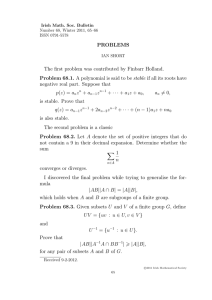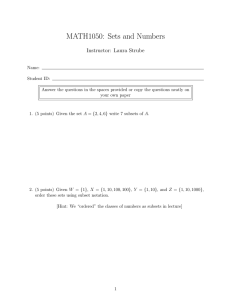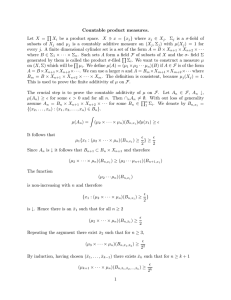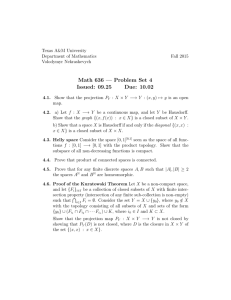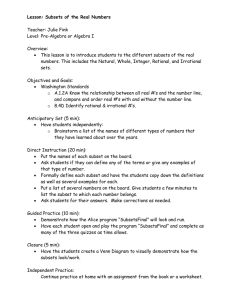ECE608, Spring 2015, Quiz 1 First Name: Last Name
advertisement
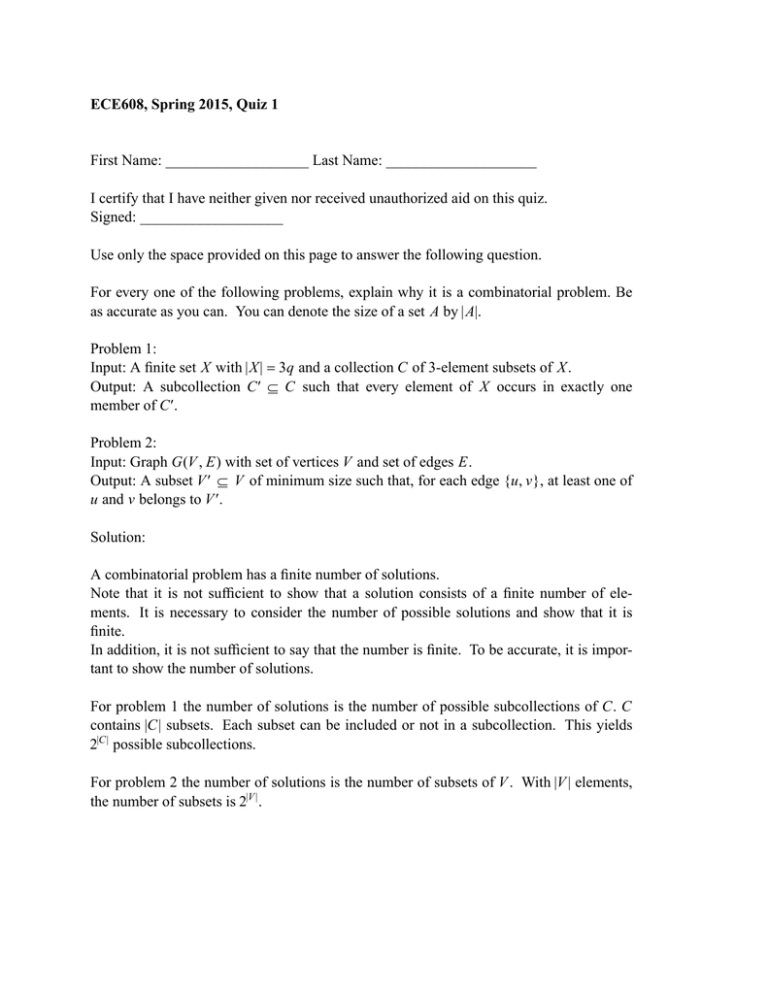
ECE608, Spring 2015, Quiz 1
First Name: ___________________ Last Name: ____________________
I certify that I have neither given nor received unauthorized aid on this quiz.
Signed: ___________________
Use only the space provided on this page to answer the following question.
For every one of the following problems, explain why it is a combinatorial problem. Be
as accurate as you can. You can denote the size of a set A by | A|.
Problem 1:
Input: A finite set X with |X| = 3q and a collection C of 3-element subsets of X.
Output: A subcollection C′ ⊆ C such that every element of X occurs in exactly one
member of C′.
Problem 2:
Input: Graph G(V , E) with set of vertices V and set of edges E.
Output: A subset V ′ ⊆ V of minimum size such that, for each edge {u, v}, at least one of
u and v belongs to V ′.
Solution:
A combinatorial problem has a finite number of solutions.
Note that it is not sufficient to show that a solution consists of a finite number of elements. It is necessary to consider the number of possible solutions and show that it is
finite.
In addition, it is not sufficient to say that the number is finite. To be accurate, it is important to show the number of solutions.
For problem 1 the number of solutions is the number of possible subcollections of C. C
contains |C| subsets. Each subset can be included or not in a subcollection. This yields
2|C| possible subcollections.
For problem 2 the number of solutions is the number of subsets of V . With |V | elements,
the number of subsets is 2|V | .
ECE608, Spring 2015, Quiz 1
First Name: ___________________ Last Name: ____________________
I certify that I have neither given nor received unauthorized aid on this quiz.
Signed: ___________________
Use only the space provided on this page to answer the following question.
For every one of the following problems, explain why it is a combinatorial problem. Be
as accurate as you can. You can denote the size of a set A by | A|.
Problem 1:
Input: Graph G(V , E) with set of vertices V and set of edges E.
Output: A subset V ′ ⊆ V of maximum size such that no two vertices in V ′ are joined by
an edge in E.
Problem 2:
Input: Collection C of subsets of a set S.
Output: A subset C′ ⊆ C of minimum size such that
∪
c ∈C′
c = S.
Solution:
A combinatorial problem has a finite number of solutions.
Note that it is not sufficient to show that a solution consists of a finite number of elements. It is necessary to consider the number of possible solutions and show that it is
finite.
In addition, it is not sufficient to say that the number is finite. To be accurate, it is important to show the number of solutions.
For problem 1 the number of solutions is the number of subsets of V . Each element of V
can be included or not in a subset. With |V | elements, the number of subsets is 2|V | .
For problem 2 the number of solutions is the number of possible subsets of C. With |C|
elements in C, the number of possible subsets is 2|C| .

